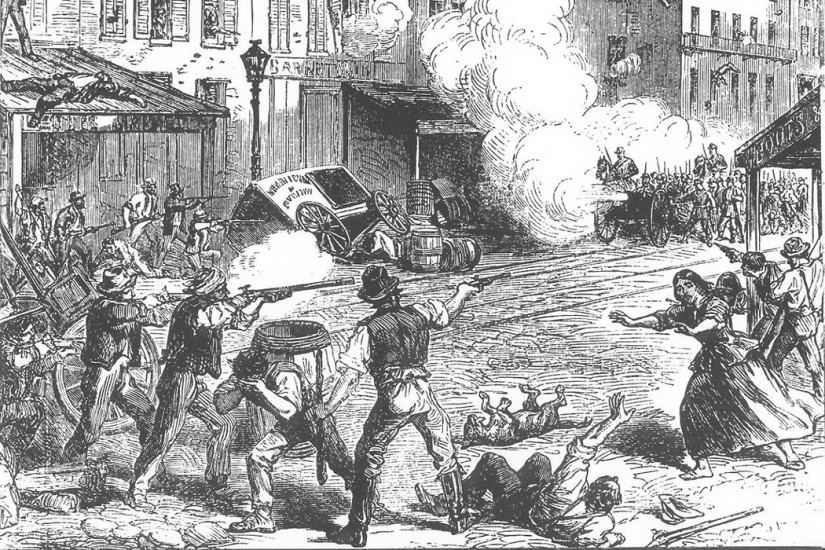An enormous historical event that shaped New York City is not much spoken of today. In July 1863, about 1,200 to 1,500 men, mostly Irish dockworkers, rioted against the Civil War draft in New York City in a four-day upheaval, targeting black workers and citizens. The number of fatalities is unclear, but reports fluctuate between 100 to over 1,000. It remains the most significant insurrection by civilians in American history.
Opposition to the Civil War was largely fueled by a fear of newly freed blacks moving north and taking over already underpaid positions, specifically as longshoremen. This fear of an “other” taking economic advantage to the detriment of “true citizens” recurs throughout history, from Nazi Germany to the current ICE raids. During his election campaign, President Donald Trump said that illegal immigrants “compete directly against vulnerable American workers.” Some argue that tapping into this fear helped secure his electoral win. Similarly, pro-slavery politicians and journalists of the mid-1800s used this fear of economic instability to their advantage and were largely responsible for promoting the rhetoric.
Beginning in 1846, newly-arrived immigrants took over menial occupations that had been reserved for black workers. Many black employees lost their jobs, as the immigrants were willing to accept work at lower rates. By 1860, fear of the outsider was turned on its head and used to cast votes against Abraham Lincoln and in support of local politicians who supported slavery. Those who promoted this fear often contradicted themselves, stating that newly-freed blacks would take jobs away from white workers, while also asserting that blacks would drain tax resources on account of their laziness.
In 1862 and 1863, longshoremen began striking in order to combat low wages. When the Erie Railroad Company hired blacks to move bales of cotton during a strike, the crowd beat them until they left the waterfront. The Hudson River Railroad hired both black and white strikebreakers when employees decried a loss in wages, but only black workers were targeted for violence. “The defeated workers seethed with resentment against those replacements whose dark skin made them stand out conspicuously and rendered them easy targets for revenge.”
